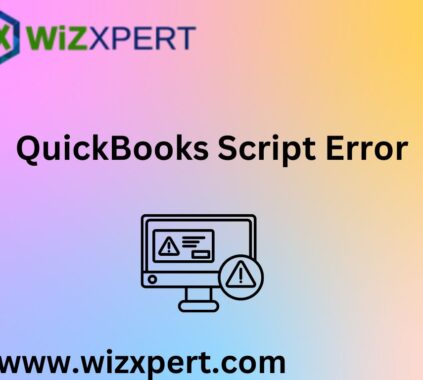In the gig economy, more individuals are taking control of their financial destinies by becoming freelancers and independent contractors. Managing finances as a self-employed professional comes with unique challenges particularly when it comes to tracking income and expenses preparing for tax season and maintaining accurate records. Enter QuickBooks Self-Employed—a powerful tool designed specifically for freelancers. In this blog, we’ll explore its features benefits, and tips for maximizing its potential.
What is QuickBooks Self-Employed?
QuickBooks Self-Employed (QBSE) is a cloud-based accounting software developed by Intuit tailored specifically for freelancers independent contractors and small business owners. It helps users track income manage expenses and simplify tax preparation. With its intuitive interface and essential features, QuickBooks Self-Employed is designed to help you focus on your work without getting bogged down by bookkeeping tasks.
Key Features of QuickBooks Self-Employed
1. Income Tracking
One of the most critical features of QuickBooks Self-Employed is its ability to track income effortlessly. Users can connect their bank accounts and credit cards to automatically import transactions. Additionally, you can manually log income from clients categorize it and generate reports that provide a clear overview of your earnings over time.
Do you want to visit Haridwar? travel agents in Haridwar is the right place to plan your tour. You can book your tour from here.
2. Expense Tracking and Categorization
Managing expenses is crucial for freelancers looking to maximize their tax deductions. QuickBooks Self-Employed allows users to track expenses by connecting to bank accounts and credit cards. You can categorize expenses based on IRS guidelines making it easy to identify deductible costs. Users can also upload receipts using the mobile app simplifying record-keeping.
3. Tax Preparation
QuickBooks Self-Employed takes the stress out of tax season. The software automatically calculates estimated quarterly taxes based on your income and expenses ensuring that you’re prepared for tax payments. It even provides reminders for tax deadlines helping you avoid late fees.
4. Mileage Tracking
For freelancers who drive for work tracking mileage is essential for maximizing deductions. QuickBooks Self-Employed includes a mileage tracking feature that allows users to log trips automatically or manually. You can categorize trips as business-related or personal providing accurate records for tax purposes.
Do you want to visit char dham? char dham tour operator is the right place to plan you Char Dham tour. You can book you tour from here.
5. Invoicing
Creating professional invoices is straightforward with QuickBooks Self-Employed. You can customize invoices with your business logo and branding set payment terms and even track invoice status. The software allows clients to pay online streamlining the payment process and improving cash flow.
6. Profit and Loss Reports
Understanding your financial health is crucial for any freelancer. QuickBooks Self-Employed generates profit and loss reports that provide insights into your income expenses and overall profitability. These reports can help you make informed decisions about your business and identify areas for improvement.
7. Mobile Access
The QuickBooks Self-Employed mobile app provides access to your financial data on the go. You can track expenses log mileage create invoices and check your financial health from your smartphone or tablet. This flexibility is particularly valuable for freelancers who are often on the move.
8. Integration with TurboTax
For freelancers, tax preparation can be daunting. QuickBooks Self-Employed integrates seamlessly with TurboTax allowing you to export your financial data directly into your tax return. This simplifies the filing process and ensures that you’re taking advantage of all available deductions.
Benefits of Using QuickBooks Self-Employed
1. User-Friendly Interface
QuickBooks Self-Employed is designed with the user in mind. Its intuitive layout and easy navigation make it accessible for individuals with little to no accounting experience. This means you can spend more time focusing on your work rather than struggling with complex software.
2. Time-Saving Automation
Automation is a game changer for busy freelancers. QuickBooks Self-Employed automates many of the tedious tasks associated with bookkeeping such as importing transactions categorizing expenses and calculating taxes. This saves valuable time that you can redirect toward growing your business.
Do you want to visit Indiar? tour operator in India is the right place to plan your tour. You can book your tour from here.
3. Financial Clarity
With comprehensive reporting features, QuickBooks Support provides clear insights into your financial health. You can track income monitor expenses and evaluate profitability at a glance helping you make informed business decisions.
4. Stress Reduction During Tax Season
Tax season can be overwhelming for freelancers but QuickBooks Self-Employed simplifies the process. By keeping accurate records throughout the year you can enter tax season with confidence knowing that your financial information is organized and readily available.
5. Affordable Pricing
For freelancers just starting affordability is a significant factor. QuickBooks Self-Employed offers a cost-effective solution with various pricing plans allowing you to choose the level of service that best fits your needs. The potential tax savings you gain from accurate expense tracking often outweigh the software’s cost.
Tips for Maximizing QuickBooks Self-Employed
1. Connect Your Bank Accounts
To fully leverage QuickBooks Desktop connect your bank and credit card accounts. This allows for automatic transaction imports reducing the time spent on manual entry and ensuring you don’t miss any important expenses.
2. Regularly Categorize Expenses
Make it a habit to categorize your expenses regularly. Setting aside a few minutes each week to review transactions will help keep your records organized and ensure you’re prepared for tax season.
3. Utilize the Mobile App
Take advantage of the QuickBooks Self-Employed mobile app. Use it to track expenses log mileage and create invoices while you’re out and about. This flexibility allows you to manage your finances in real-time ensuring you never miss an important transaction.
4. Keep Receipts Organized
For tax purposes, it’s essential to keep receipts for all business-related expenses. Use the receipt capture feature in the mobile app to upload and categorize receipts immediately. This helps maintain accurate records and simplifies tax preparation.
5. Monitor Your Financial Health
Regularly review your profit and loss reports to monitor your financial health. Understanding your income and expenses can help you make informed decisions about budgeting pricing and growth strategies.
6. Plan for Taxes
Be proactive about tax planning. Use the tax estimates feature to set aside funds for quarterly tax payments. Understanding your tax obligations throughout the year will help you avoid surprises when tax season arrives.
7. Integrate with Other Tools
If you use other business tools explore integration options. QuickBooks Self-Employed can connect with various applications to streamline workflows and improve overall efficiency. Whether it’s project management tools or e-commerce platforms integrations can enhance your productivity.
Conclusion
QuickBooks Self-Employed is an essential tool for freelancers and independent contractors looking to streamline their financial management. With its user-friendly features powerful automation and comprehensive reporting, it allows you to focus on your work rather than getting bogged down by bookkeeping tasks. By leveraging the full potential of QuickBooks Self-Employed you can gain financial clarity reduce stress during tax season and ultimately position yourself for success in your freelancing career. Whether you’re a seasoned professional or just starting QuickBooks Self-Employed is a valuable ally in navigating the complexities of self-employment.
Read more (Click Here)



